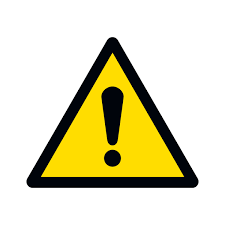
Check Points
Share
|
PROBLEM |
POSSIBLE CAUSE |
SOLUTION |
|
Discharge pump becomes stiff to |
Scale deposit build up in pump cylinder (2 or VE2) |
With time, depending on salinity and temperature of the sea water, scale deposit will build up in the discharge pump and hose. The warmer and more salty the water, the faster this deposit will form. It can be removed by stripping the pump (see section 7.3) and chipping it off or, by soaking it in vinegar to dissolve it. Scale is best removed from the discharge hose by physically bending and "working" the pipe so that the scale is dislodged and falls out. If it is possible to remove the hose, this task is made much easier. |
|
|
Oil or grease in the pump |
NEVER use oil or grease to lubricate either of the pump cylinders. It will cause the bucket washers (51 or VE51) to expand and eventually seize in the cylinder, if this happens the bucket washers must be replaced. The best pump lubricant is liquid soap. When replacing the bucket washers note that they are supplied over size to take up any wear on old cylinders. This may mean the pump is stiff to operate having |
|
|
|
just replaced the bucket washers. To remedy this situation, remove excess material from the outer circumference - use a file or emery paper. |
|
Flushing |
Bucket washer |
Replace bucket washer. It may be necessary to |
|
pump |
worn |
lightly abrade the new washer to get a good |
|
loses |
|
sliding fit as described above. Liquid soap will |
|
priming |
|
act as a suitable lubricant. |
|
|
Lower valve not |
The lower valve (29A or VE29A) - see pages 9 or |
|
|
seating |
17 - is aluminium Bronze and has a ground |
|
|
correctly |
seating. If the seating is damaged, worn or has |
|
|
|
debris interfering with it, it will be fairly |
|
|
|
clear on dismantling - see pages 45 and 46. |
|
|
|
Either clear the debris or re-grind the valve |
|
|
|
using grinding paste - replacement of the |
|
|
|
complete assembly may be necessary. |
|
PROBLEM |
POSSIBLE CAUSE |
SOLUTION |
|
Water runs back to bowl after |
Safety Control Valve (11 or VE11) leaking |
Ensure the Safety Control Valve is closed, then close the"inlet seacock as well. If the water stops running back into the bowl (59A or V59A) the Safety control valve is faulty and should be replaced - see section 7.5.1. |
|
discharge pumping |
|
|
|
Discharge clack valve not holding. |
If, having carried out the above test, the water still runs back into the bowl then it is the discharge pump which is at fault. Water will be leaking back into the bowl past the weighted clack valve. The weighted clack valve may be held open by debris or, it may be leaking because of general wear on the valve faces. Clean and replace if necessa ry. Note that since Mar 1991 all new toilets have an improved "pressure" lip valve (84) see page 37 - this improved valve is supplied as a matter of course in the (Baby or Minor) Cruising spares kit - see section 4, TABLE B. |
|
|
Glands |
0 rings worn - |
Depending on the age of the toilet, it will be |
|
leak on |
Gland packing |
fitted with lip seals, O ring glands or gland |
|
inlet or |
worn- |
packing - see pages 7,10,15 & 18. Instructions |
|
discharge |
Pump spindles or |
for servicing these seals are given in sections |
|
pumps |
Gland nuts worn |
7.3 and 7.4. After some years the pump spindles |
|
|
|
and gland nuts may wear resulting in the gland |
|
|
|
leaking at mid stroke of the pump - even after |
|
|
|
replacing with new lip seals, 0 rings or gland |
|
|
|
packing. Check spindles and gland nuts for wear |
|
|
|
and replace as necessary. |
